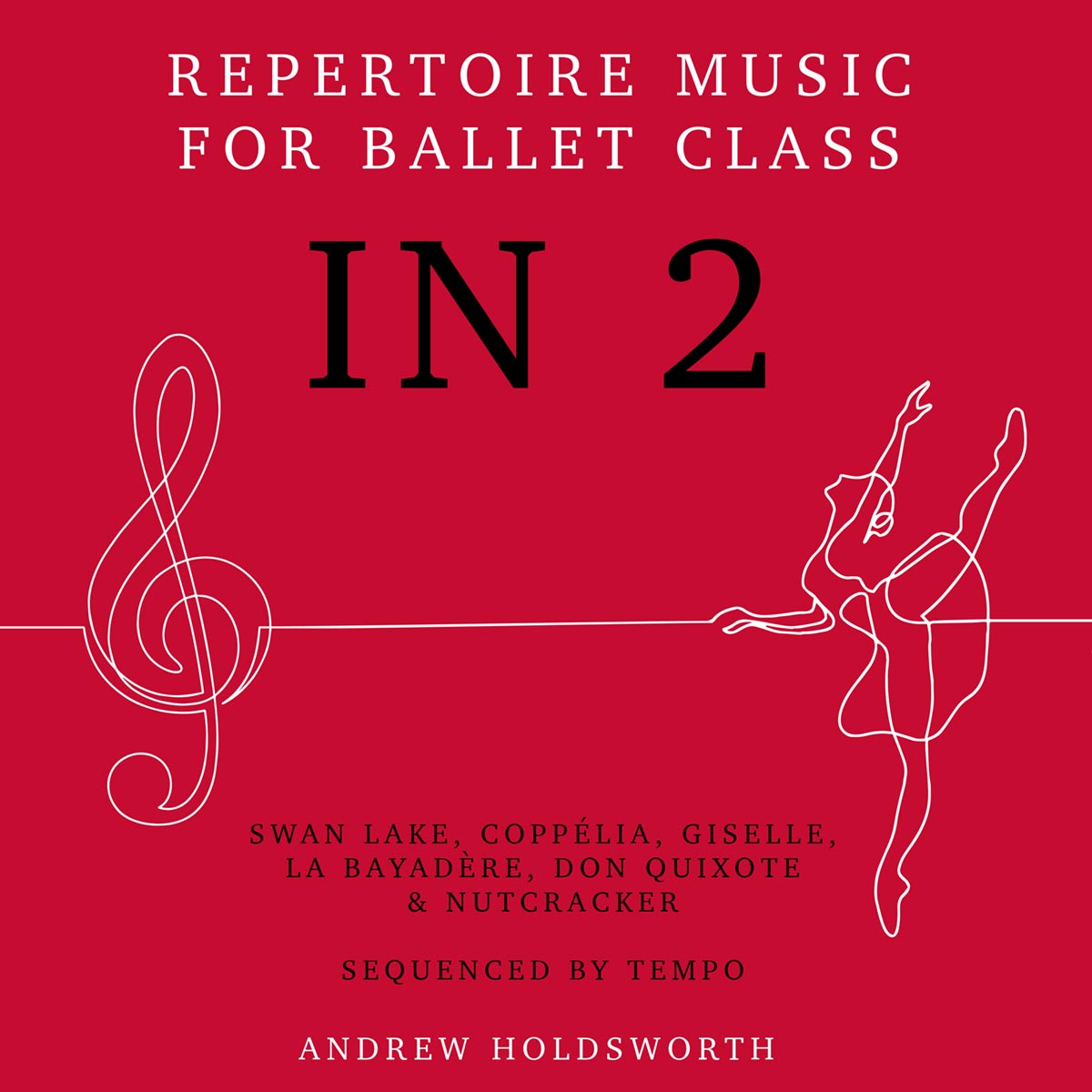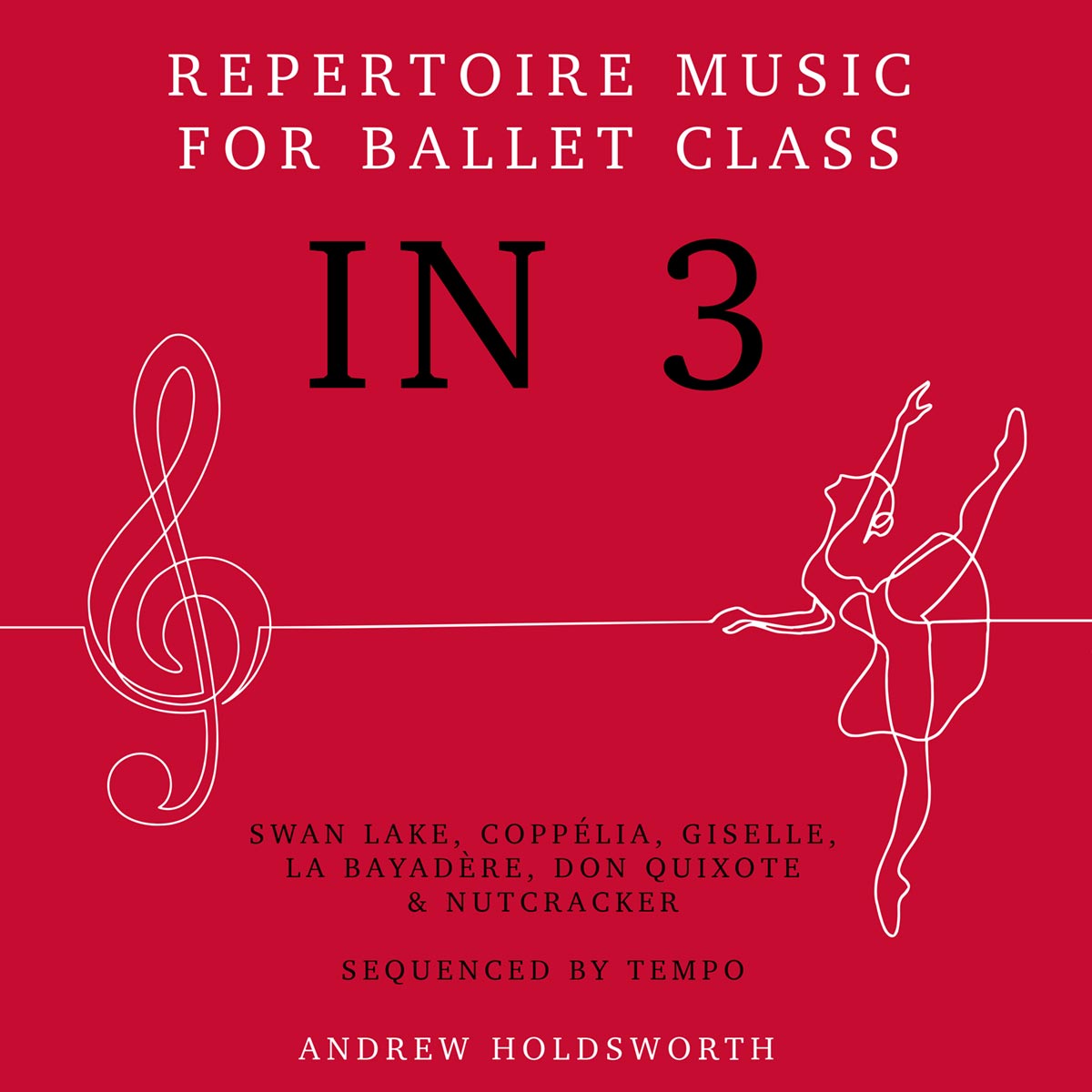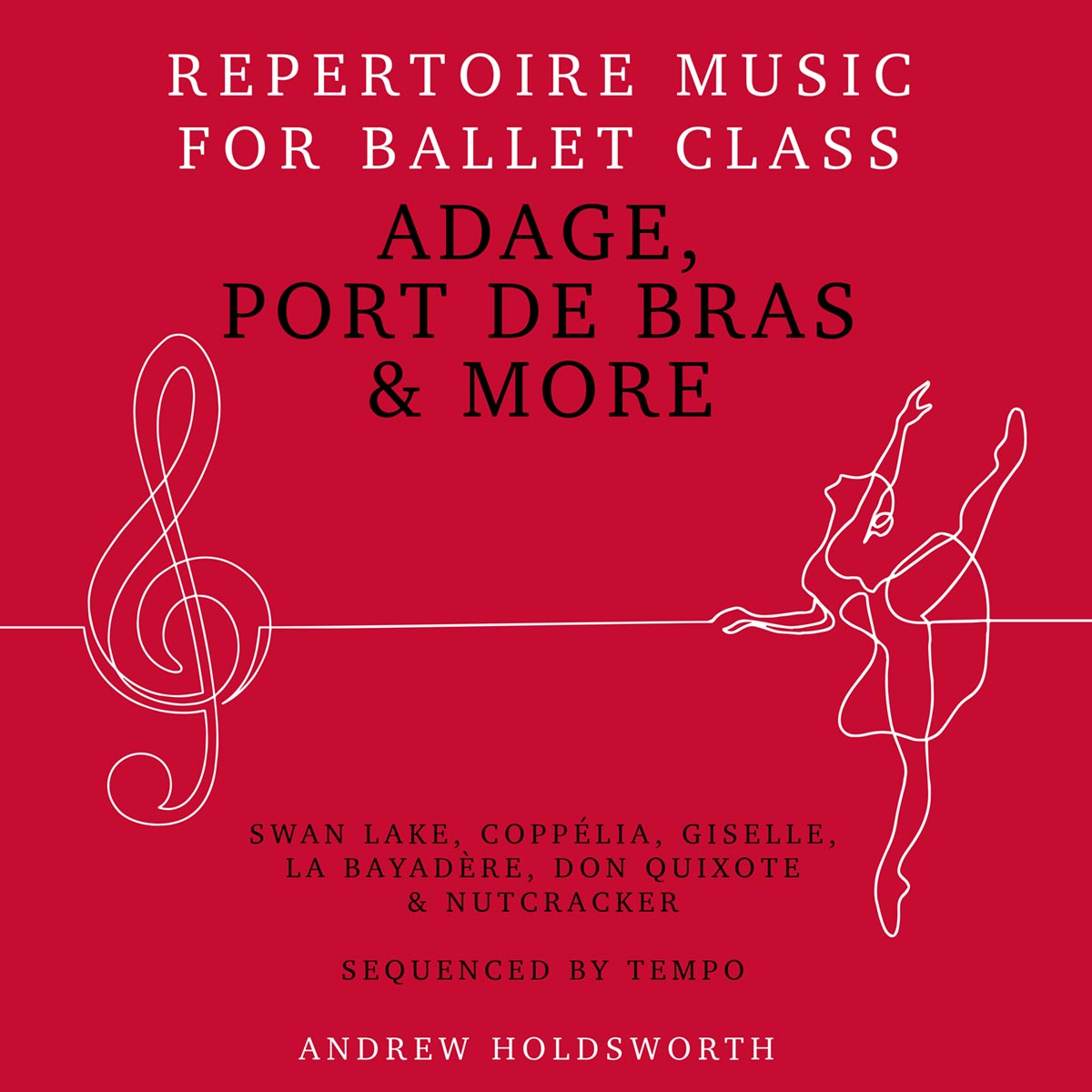This series was inspired by Andrew’s work on the music for the new Associate Training and Assessment Programme at the Royal Ballet School. This programme doesn’t have a syllabus as such – rather, teachers are encouraged to put their own enchaînements together for students, using a prescribed vocabulary of movements.
These three albums contain over 200 pieces of music – six complete ballets (Swan Lake, Giselle, Coppélia, La Bayadère, Don Quixote & The Nutcracker) recorded with even phrasing for easy setting in class. The music is organised by time signature and sequenced by tempo, from slow to fast.
Click an album to listen
For younger dancers, there is a similar series (blue, orange and purple album covers) containing popular Film and Musical Theatre themes arranged and sequenced in the same way.
Some notes on ‘Repertoire Music for Ballet Class’ – September 2023
Tempo choices A – Arranging ballet class music into categories of tempo and time signature presents several challenges. The tempo I have put in brackets after each track title and even the ‘two-ness’ or ‘three-ness’ of a track are to some extent subjective. The slow ‘In 2’ tracks for instance could be counted at double the stated tempo, the faster tracks at half the stated tempo. The first track on the 2/4 album, the Swan Lake Czardas, could be counted at (and notated at) 31 beats per minute (counting the ‘beat’ as the minim chord changes) or 62 bpm (if you were to walk to the music) or even conceivably as 124 bpm. And of course, choreography may have steps at half, single, double time etc of what we call the ‘beat’.
Tempo choices B – On stage, the music on these albums would be performed at a range of speeds depending on the soloist, the conductor and the tradition / era of the performance. For this series of albums, I generally chose tempos that I felt would be useful and exciting do dance to in class so apologies if I haven’t recorded your favourite music at your favourite tempo.
Compound time signatures – I’ve put most of the music notated in 6/8 on the ‘In 2’ album as these pieces are most likely to be counted ‘1 & a 2 & a’ (not 1 2 3 4 5 6), and are likely to have a similar role in class to a 2/4 at a comparative speed (sautés at 100 BPM, for instance). Although many ballet waltzes were originally notated in 6/8, most dance teachers would count them in 3, so they are on the ‘In 3’ album. Giselle’s Entrance and the Hunt scene are both in 6/8 but are not out of place at the end of the ‘In 3’ collection if counted in quavers rather than dotted crotchets.
Metre in slower pieces – For the sake of simplicity, I’ve divided the Adage & Port de Bras collection into ‘In 4’ and ‘In 3’. There are many pieces here that are slow 12/8s or slow 6/8s but I’ve classed these as ‘in 4 with a triplet feel’. These pieces could on one level be counted in 3 or 6 or 12 but I suspect most dancers wouldn’t count them this way – rather 1 & a 2 & a 3 & a 4 & a – the ‘& a’ forming the ‘triplets’.
Tempo perception A – A piano recording may sound to be slower than an orchestral recording at the same tempo. After years of recording pianos and orchestras playing the same music, I’ve never established definitively why this is the case. Pianos are percussive and are typically recorded with microphones close to the strings. The sound of an orchestra has a slower ‘attack’ and is recorded with more distant microphones to record the blend of the instruments and the bloom of the hall they’re recorded in. I wonder whether a piano has to play slightly faster than an orchestra to generate the same perceived ‘energy’? Answers on a postcard please.
Tempo perception B – A rag may sound ‘lazier’ than a light, straight 2/4 at the same tempo. A 6/8 may feel different for the dancer to a 2/4 at the same tempo even though the downbeats occur with exactly the same frequency. The pitch range of an accompaniment may also affect the perceived tempo – a piece in the lower register of the piano may sound ‘slower’ than it is, a higher register piece ‘faster’.
Alternative arrangements of piano scores – I have in several cases done my own piano arrangements of the orchestral score and there are several reasons for this. Some piano scores are over-complex and unplayable (for me at least), some are overly simplistic and some ‘orchestral reductions’ do not convey the ‘effect’ of dancing to an orchestra and sound dull and uninspiring. On the other hand, an orchestral score is optimised for the experience of the audience. My intention with these albums was to present the teacher and the dancers with music that complements and doesn’t detract from the steps being learned, so my timing is relatively strict and some of the phrasing and dynamics aren’t what you might hear on stage.
Even phrase lengths – A decision I had to make early on in the recording process was whether to play the ‘original structure’ of each piece, or whether to make the phrasing ‘square’ ie in groups of 8, 16, 32, 64 etc. In the vast majority of cases, I chose a square structure which I think will be most flexible in class.
Track titles – I have deliberately used as few characters as possible so all the relevant information is visible on Spotify on a phone screen. If you want opus numbers and full titles, they’re easy to find elsewhere on Spotify or on Wikipedia.
Happy Birthday – In a group of 13 dancers, someone’s likely to have a birthday every 4 weeks. So no, this music from ‘In 3’ is not from a ballet, but it’s FUN, and FUN should be at the heart of every class!


